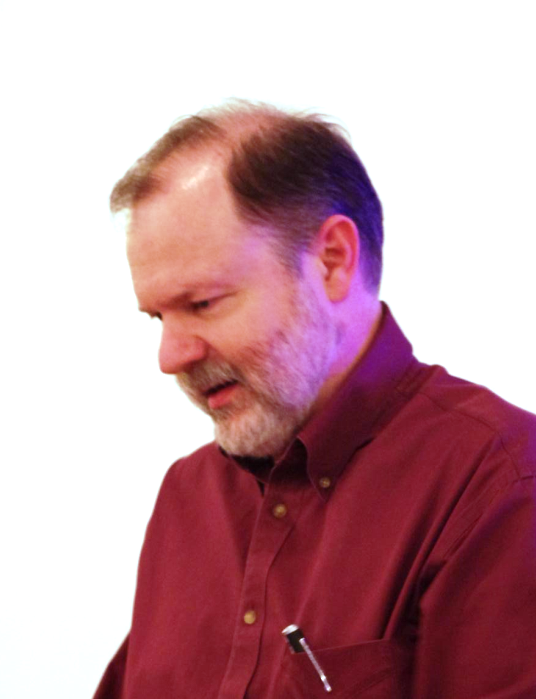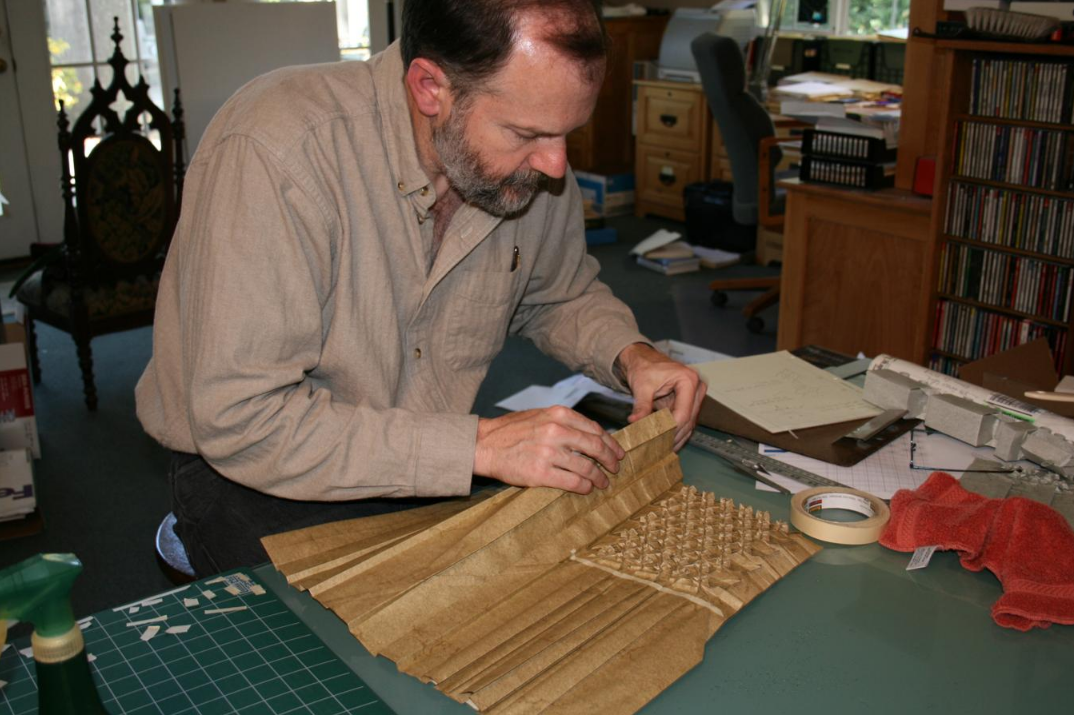- real-world applications
- origami
- animals
Basic Information

(May 1961–)
Location: Dayton, Ohio, U.S.
1. Introduction
Robert J. Lang (born May 4, 1961) is an United States physicist who is also one of the foremost origami artists and theorists in the world. He is known for his complex and elegant designs, most notably of insects and animals. He has studied the mathematics of origami and used computers to study the theories behind origami. He has made great advances in making real-world applications of origami to engineering problems.
2. Education and Early Occupation

Lang was born in Dayton, Ohio, and grew up in Atlanta, Georgia.[1] Lang studied electrical engineering at the California Institute of Technology, where he met his wife-to-be, Diane.[2] He earned a master's degree in electrical engineering at Stanford University in 1983, and returned to Caltech for a Ph.D. in applied physics, with a dissertation titled Semiconductor Lasers: New Geometries and Spectral Properties.[2][3]
Lang began work for NASA's Jet Propulsion Laboratory in 1988.[2] Lang also worked as a research scientist for Spectra Diode Labs of San Jose, California,[4] and then at JDS Uniphase, also of San Jose.[4][5]
Lang has authored or co-authored over 80 publications on semiconductor lasers, optics, and integrated optoelectronics, and holds 46 patents in these fields.[5] In 2001, Lang left the engineering field to be a full-time origami artist and consultant.[4] However, he still maintains ties to his physics background: he was the editor-in-chief of the IEEE Journal of Quantum Electronics from 2007 to 2010, and has done part-time laser consulting for Cypress Semiconductor, among others.[5] Lang currently resides in Alamo, California.[1]
3. Origami
Lang was introduced to origami at the age of six by a teacher who had exhausted other methods of keeping him entertained in the classroom.[2] By his early teens, he was designing original origami patterns.[2] Lang used origami as an escape from the pressures of undergraduate studies. While studying at Caltech, Lang came into contact with other origami masters such as Michael LaFosse, John Montroll, Joseph Wu, and Paul Jackson through the Origami Center of America, now known as OrigamiUSA.[2]
While in Germany for postdoctoral work, Lang and his wife were enamored of Black Forest cuckoo clocks, and he became a sensation in the origami world when he successfully folded one after three months of design and six hours of actual folding.[2]
Lang takes full advantage of modern technology in his origami, including using a laser cutter to help score paper for complex folds.[6]
Lang is recognized as one of the leading theorists of the mathematics of origami. He has developed ways to algorithmetize the design process for origami,[7] and is the author of the proof of the completeness of the Huzita–Hatori axioms.[8]
Lang specializes in finding real-world applications for the various theories of origami he has developed. These included designing folding patterns for a Germany airbag manufacturer.[3] He has worked with the Lawrence Livermore National Laboratory in Livermore, California , where a team is developing a powerful space telescope, with a 100 m (328 ft) lens in the form of a thin membrane. Lang was engaged by the team to develop a way to fit the tremendous lens, known as the Eyeglass, into a small rocket in such a way that the lens can be unfolded in space and will not suffer from any permanent marks or creases.[9] Lang is the author or co-author of eight books and many articles on origami.[1] Lang also designed the Google Doodle for Akira Yoshizawa's 101st birthday, which was used by Google on March 14, 2012.[10]
4. Awards and Honors
In 2012 he became a fellow of the American Mathematical Society.[11] In addition, Lang is recognized as a Hinge Visible Expert, as an engineer who has attained high visibility and expertise.[12]
5. Bibliography
- The Complete Book of Origami; Dover Publications, 1988, ISBN:0-553-38016-8
- Origami Zoo (with Stephen Weiss ); St. Martin's Press, 1989, ISBN:0-312-04015-6
- Origami Sea Life (with John Montroll); Dover Publications, 1990, ISBN:0-486-26765-2
- Origami Animals; Crescent, 1992 (out of print), ISBN:0-517-07320-X OCLC 439612324
- Origami Insects and their Kin; Dover Publications, 1995, ISBN:0-486-28602-9
- Origami in Action; St. Martin's Press, 1996, ISBN:0-312-15618-9
- Origami Design Secrets: Mathematical Methods for an Ancient Art. A K Peters. 2003. ISBN 1-56881-194-2.
The content is sourced from: https://handwiki.org/wiki/Biography:Robert_J._Lang
References
- Lang, Robert J. (2007). "About the Artist". Robert J. Lang Origami. http://www.langorigami.com/artist/artist.php4. Retrieved 2007-04-12.
- Orlean, Susan (February 19, 2007). "The Origami Lab". Onward and Upward With the Arts. The New Yorker. p. 2. http://www.newyorker.com/reporting/2007/02/19/070219fa_fact_orlean?currentPage=2. Retrieved 2007-04-11.
- Kirsten Sanford and Justin Jackson (July 7, 2005). "July 7, 2005 Broadcast". This Week in Science (Podcast). Archived from the original on September 27, 2007. Retrieved April 12, 2007. Unknown parameter |deadurl= ignored (|url-status= suggested) (help) https://web.archive.org/web/20070927221958/http://www.twis.org/audio/2005/07/26/
- Orlean, Susan (February 19, 2007). "The Origami Lab". Onward and Upward With the Arts. The New Yorker. p. 1. http://www.newyorker.com/reporting/2007/02/19/070219fa_fact_orlean?currentPage=1. Retrieved 2007-04-11.
- Orlean, Susan (February 19, 2007). "The Origami Lab". Onward and Upward With the Arts. The New Yorker. p. 4. http://www.newyorker.com/reporting/2007/02/19/070219fa_fact_orlean?currentPage=4. Retrieved 2007-04-11.
- Orlean, Susan (February 19, 2007). "The Origami Lab". Onward and Upward With the Arts. The New Yorker. p. 3. http://www.newyorker.com/reporting/2007/02/19/070219fa_fact_orlean?currentPage=3. Retrieved 2007-04-11.
- Hull, Thomas (November 29, 2003). "Origami Mathematics". Merrimack College. Archived from the original on April 18, 2007. https://web.archive.org/web/20070418030541/http://www.merrimack.edu/~thull/OrigamiMath.html. Retrieved 2007-04-12.
- Lang, Robert J. (2003) (PDF). Origami and Geometric Constructions. Robert J. Lang. http://www.langorigami.com/science/hha/origami_constructions.pdf. Retrieved 2007-04-12.
- Britt, Robert Roy (February 20, 2002). "Origami Astronomy: The Art and Science of a Giant Folding Space Telescope". Tech Wednesday. Space.com. Archived from the original on 2002-06-06. https://web.archive.org/web/20020606141924/http://www.space.com/businesstechnology/technology/origami_design_020220-1.html. Retrieved 2007-04-12.
- Albanesius, Chloe (March 14, 2012). "Origami Legend Akira Yoshizawa Honored With Google Doodle". PC Magazine. https://www.pcmag.com/article2/0,2817,2401537,00.asp. Retrieved March 14, 2012.
- List of Fellows of the American Mathematical Society, retrieved 2013-01-27. http://www.ams.org/profession/fellows-list
- Hinge Marketing, retrieved 2014-02-03. http://www.hingemarketing.com/blog/story/visible-expert-profile-robert-j.-lang-ph.d
